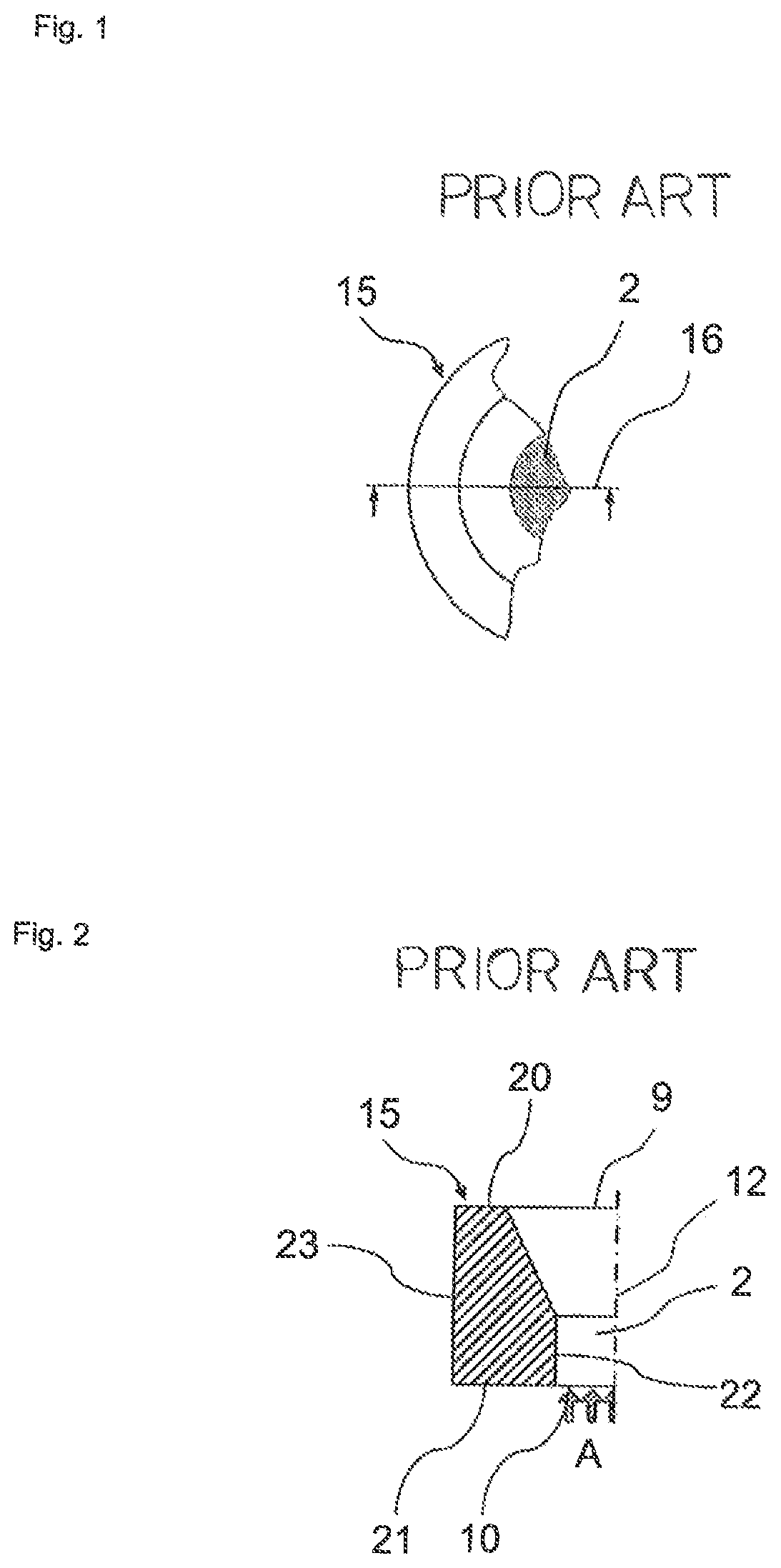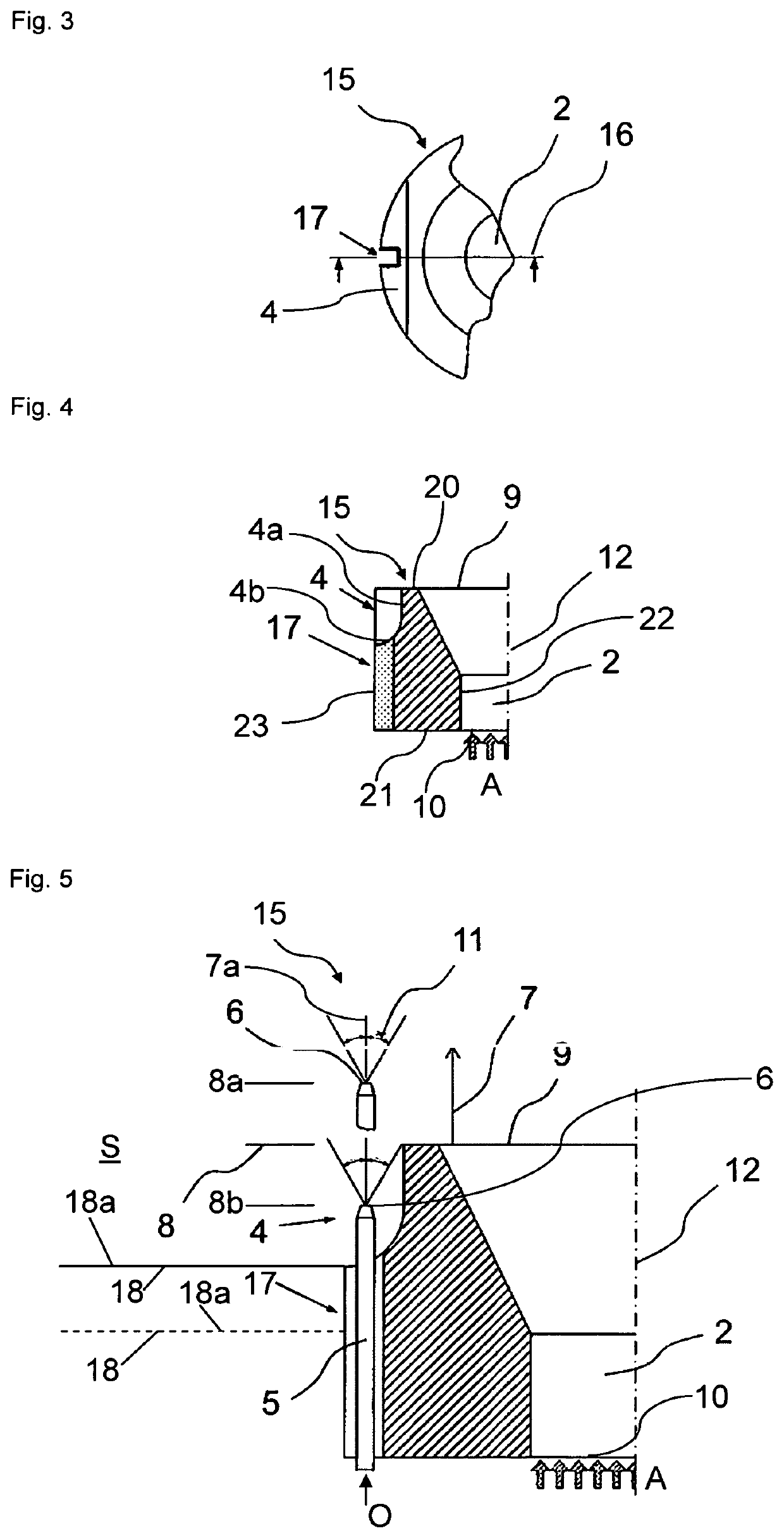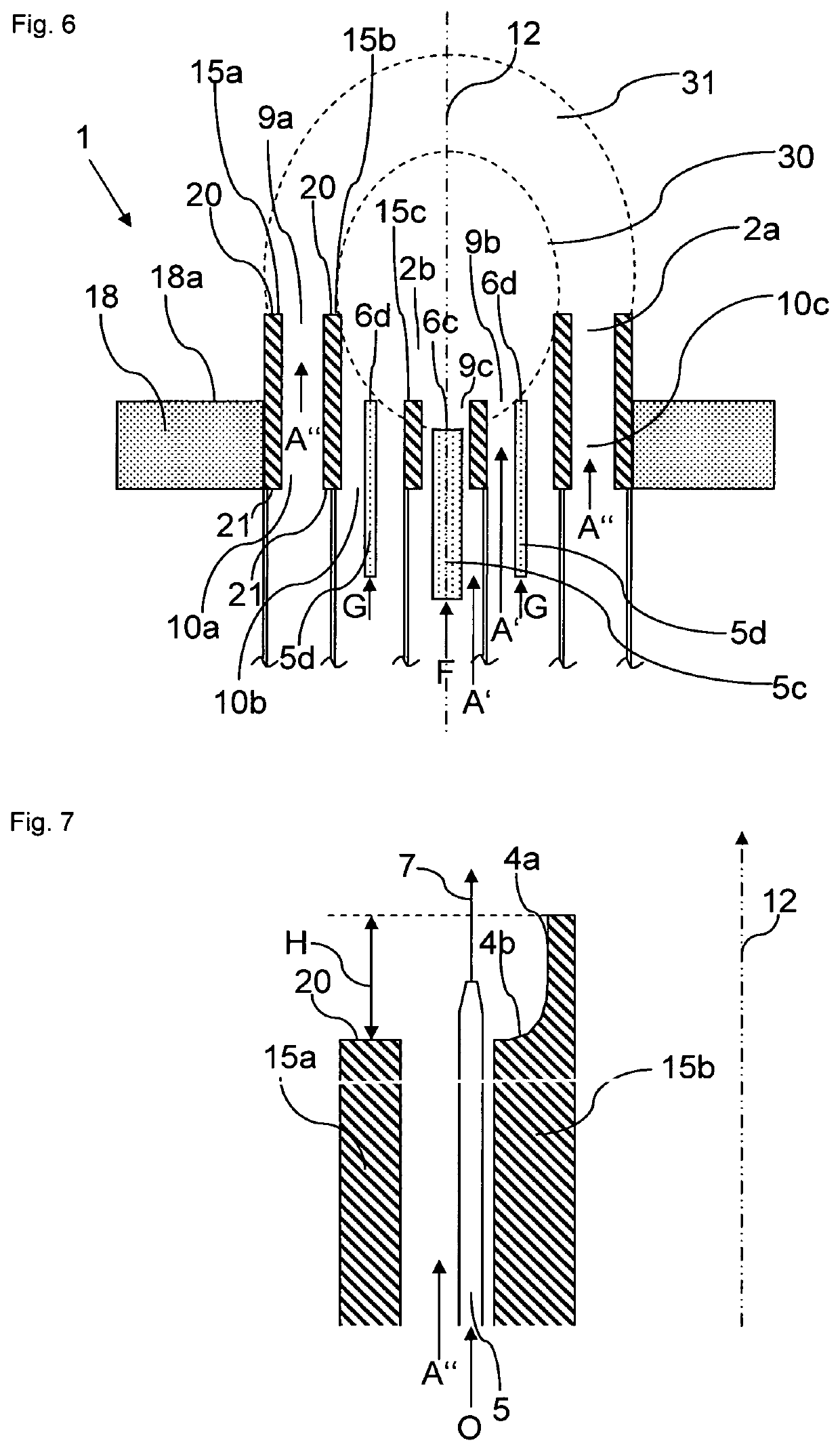Low-NOx-burner
a low-no, burner technology, applied in the field of burners, can solve the problems of limited thermal nox production, and achieve the effect of enhancing the recirculation of flue gas and enhancing the utilization of remaining burnable reactants
- Summary
- Abstract
- Description
- Claims
- Application Information
AI Technical Summary
Benefits of technology
Problems solved by technology
Method used
Image
Examples
Embodiment Construction
[0057]FIG. 1 shows a conventional burner tile 15 out of a refractory material such as Alumina based refractory having a central air inlet 10.
[0058]In FIG. 2 a cross sectional view along plane 16 of FIG. 1 of the conventional burner tile 15 is shown. The air inlet 2 is in flow connection to a central opening 2 of the tile 15, which opening 2 extends along a burner axis 12 and ends at a discharge outlet 9 for discharging a flame generated by the burner.
[0059]In detail, the tile 15 further comprises a front side 20 and a rear side 21 that faces away from the front side 20 of the tile 15, wherein the rear side 21 delimits said air inlet 10, and wherein the front side 20 delimits said discharge outlet 9. The air inlet 10 is in flow connection to an air source for feeding air into said opening 2 of the tile 15 that is needed for combustion of fuel. The tile 15 further comprises an inside 22 facing said central opening 2 as well as an outside 23 facing away from said opening 2.
[0060]FIGS. ...
PUM
 Login to View More
Login to View More Abstract
Description
Claims
Application Information
 Login to View More
Login to View More - R&D
- Intellectual Property
- Life Sciences
- Materials
- Tech Scout
- Unparalleled Data Quality
- Higher Quality Content
- 60% Fewer Hallucinations
Browse by: Latest US Patents, China's latest patents, Technical Efficacy Thesaurus, Application Domain, Technology Topic, Popular Technical Reports.
© 2025 PatSnap. All rights reserved.Legal|Privacy policy|Modern Slavery Act Transparency Statement|Sitemap|About US| Contact US: help@patsnap.com



